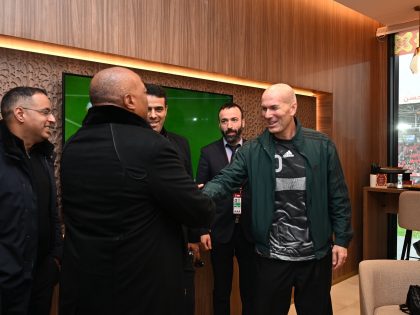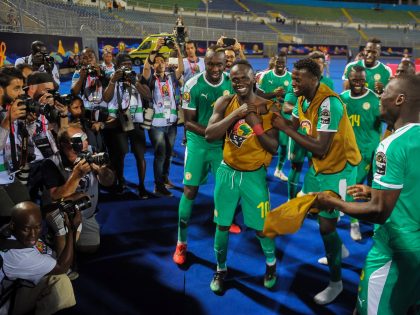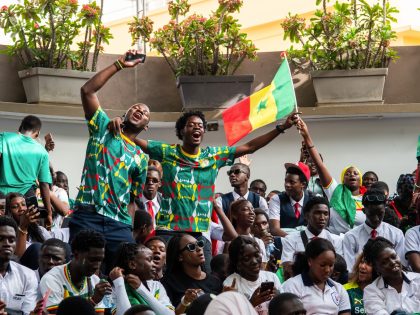Taking a Critical Look at Dominant White Beauty Ideals
Redmond is an Amsterdam-based intersectional feminist media collective, organizes conversation about beauty ideals, whiteness, race and cultural appropriation.

Image: Redmond Facebook page.
In the Netherlands, white feminists have expressed concern when it comes to thin models, the use of Photoshop to alter body sizes, and the pervasive influence of the fashion industry on young girls but they have also failed to address the whiteness of the dominant beauty ideal. Miley Cyrus and all the twerking, the black-faced and red-faced models in Dutch Vogue, the historical representation of women of color and the whiteness of the wedding industry: these were just a few things on the agenda of the first Redmond Summer Event this year. Redmond is an Amsterdam-based intersectional feminist media collective that I am part of. We thought it was time to have a real conversation about beauty ideals, whiteness, race and cultural appropriation.
For the debate, Redmond invited five women of color — Patricia Kaersenhout and Kim Dankoor, Simone Zeefuik, Tessa Boerman and Bel Parnell-Berry — to listen to their perspectives on the dominant white beauty ideal. Why does the whiteness of this beauty ideal need to be addressed? Redmond asked how these women of color deal with dominant beauty ideals in their daily lives and in their work as artists, academics, journalists and activists. The panel shared their visions and ideas with the audience. We will not bore you with too many details but we thought it would be nice to introduce some of the ideas these artists and activists are negotiating in the Netherlands.
In her work, Patricia Kaersenhout, a Dutch artist with Surinamese roots, looks at the representation of women of color in relation to racism, sexism and the legacies of slavery and colonialism. At Redmond, she spoke with us about the historical neglect of black women but also current representations of women of color. Kaersenhout stressed the need for counter images, images of women of color that are not stereotypical. Inspired by the book Ain’t I A Woman by bell hooks, she created the series, ‘what you don’t see is what you won’t get’. She also showed some of the images from her series, ‘your history makes me so horny’ made on fabric. They speak to the sexualization of the black body and raise questions about desire, objectification and the neglect of the female black body:
After putting the representation of women of color in a historical perspective, Tessa Boerman, a documentary filmmaker maker, screened two short clips of her work. She has made two powerful documentaries that highlight different aspects of beauty, ideals and belonging. ‘A Knock Out’ looks at the life of Michele Aboro, a black lesbian boxer who was very successful in the ring but was told that she wasn’t sexy enough outside of it; the promoters wanted to see a sexy vamp and terminated her contract early. Her film also implicates that the white beauty ideal does not stand alone but relates to broader issues such as everyday and institutionalized racism as well. Her second documentary, ‘Zwart Belicht’, explores the historic representation of black women in paintings of Rubens:
Activist and academic Bell Parnell Berry addressed how beauty ideals relate to gender and race within the wedding industry. There are hardly any wedding magazines featuring people of color, people that are not thin, same sex couples or non cis-gendered people. Bell Parnell Berry critically discussed contemporary TV shows such as ‘My Fat Big Gypsy Wedding’ and ‘Don’t tell the bride’. In response to this lack of representation she decided to start her own blog, Invisible Brides.
Simone Zeefuik, community organizer and founder of Re-Definition, a platform for poets and writers, spoke about the role of language in fashion magazines. Language, as we know, is never neutral and plays an important role when it comes to sending messages about what is beautiful and what is not. For instance, several hair ads speak about containing ‘messy natural afro hair’ to make sure it becomes nice and straight.
The final panelist, Kim Dankoor works as a journalist and media educator. She has researched the impact that Hip-Hop videos might have on young women of color in Atlanta, U.S.A., and in the Netherlands. It appeared that many women desired to be lighter-skinned and even considered skin bleaching, a subject that she plans to research and document further.
The Redmond Summer was a first attempt to start a conversation about some the issues mentioned above, but of course our conversations weren’t exhaustive – there is still much to be addressed. Deconstructing and critiquing what seems so normalized is key to understand how white beauty ideals and systems of whiteness work.



















